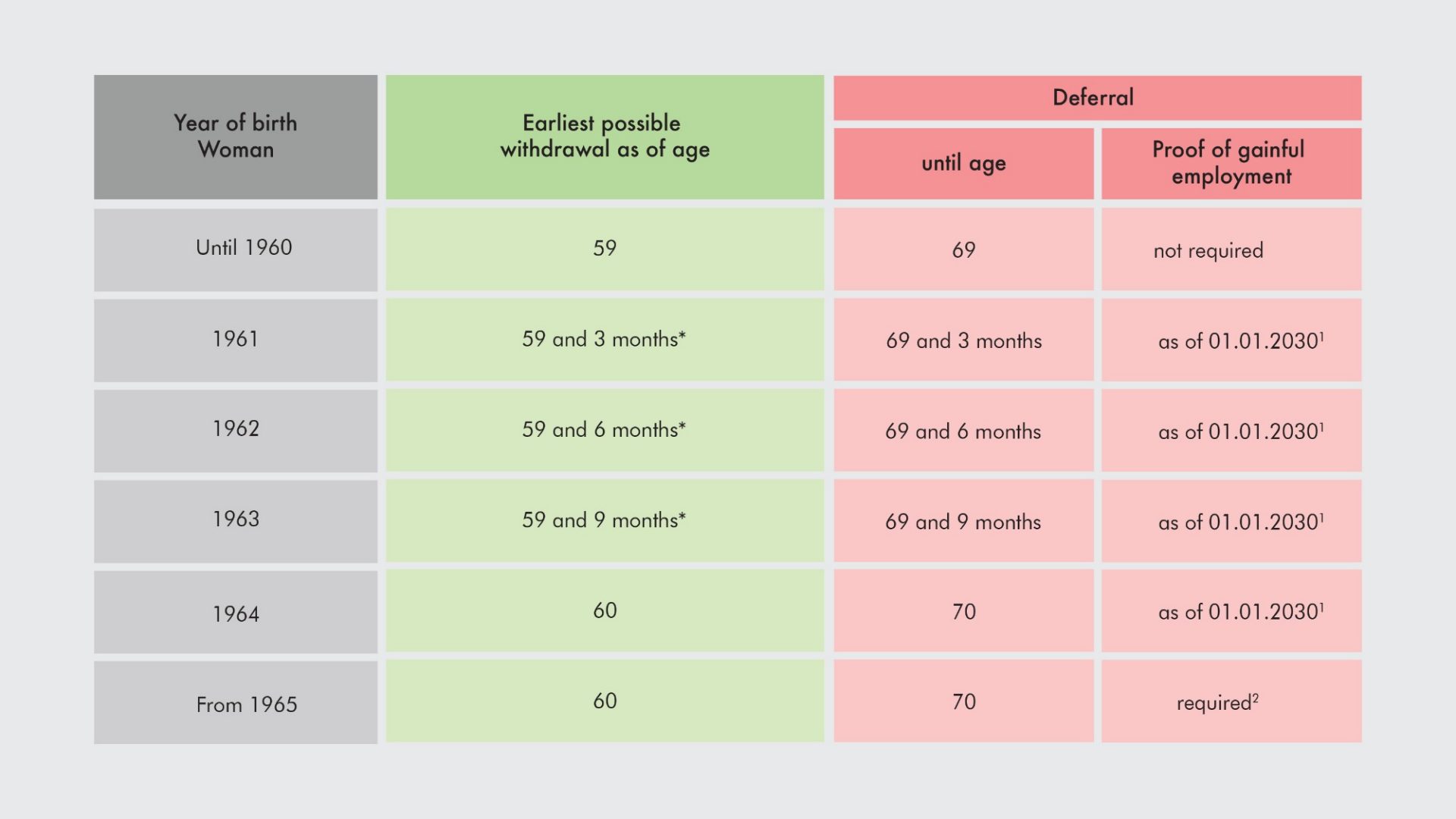
Changes in vested benefits solutions
Reference age for women
The core of the “OASI 21” reform is the raising of the retirement age for women to 65 in the OASI and compulsory occupational benefit schemes. This means that women will reach ordinary retirement one year later than before. The higher retirement age will apply as of 1 January 2024. In the law, the term “retirement age” has been replaced by “reference age”.
For women approaching retirement, the increase in the reference age will be staggered, with annual increments of 3 months. Women born in 1960 will reach the ordinary reference age in 2024, i.e. at the age of 64 as before. From 2025, the reference age for women born in 1961, 1962 and 1963 will increase by 3, 6 and 9 months respectively.
This also applies with regard to vested benefits.
Withdrawal of vested benefits
As up to now, assets in vested benefits accounts or in vested benefits policies may be withdrawn at the earliest five years before the reference age.
The drawing of benefits may then continue to be deferred for a maximum of five years after reaching the reference age. But due to the gradual increase in the reference age for women, the latest possible age for drawing the benefits will shift depending on the year of birth (see table). Owing, however, to a new “OASI 21” rule, deferral is only possible if the policyholder is still gainfully employed. If this is not – or is no longer – the case, the assets must be withdrawn when the reference age is reached or when, at a later date, the person ceases to work.
However, there is a generous transitional period for this change: proof of continued employment need only be provided for the first time on 1 January 2030. Persons who reach or have already exceeded the OASI reference age in 2024 can therefore leave their assets where they are without proof of gainful employment up to the age of 70 (men) or 69 (women) at the latest.

* not relevant, as the persons born in these years will already have reached the age of 60 in 2024.
1 If no gainful employment can be proven, the deferral ends on 31.12.2029 and the benefits must be drawn.
2 Deferral is possible at the latest until the end of gainful employment. Deferral is excluded if no gainful employment can be proven when the reference age is reached.
